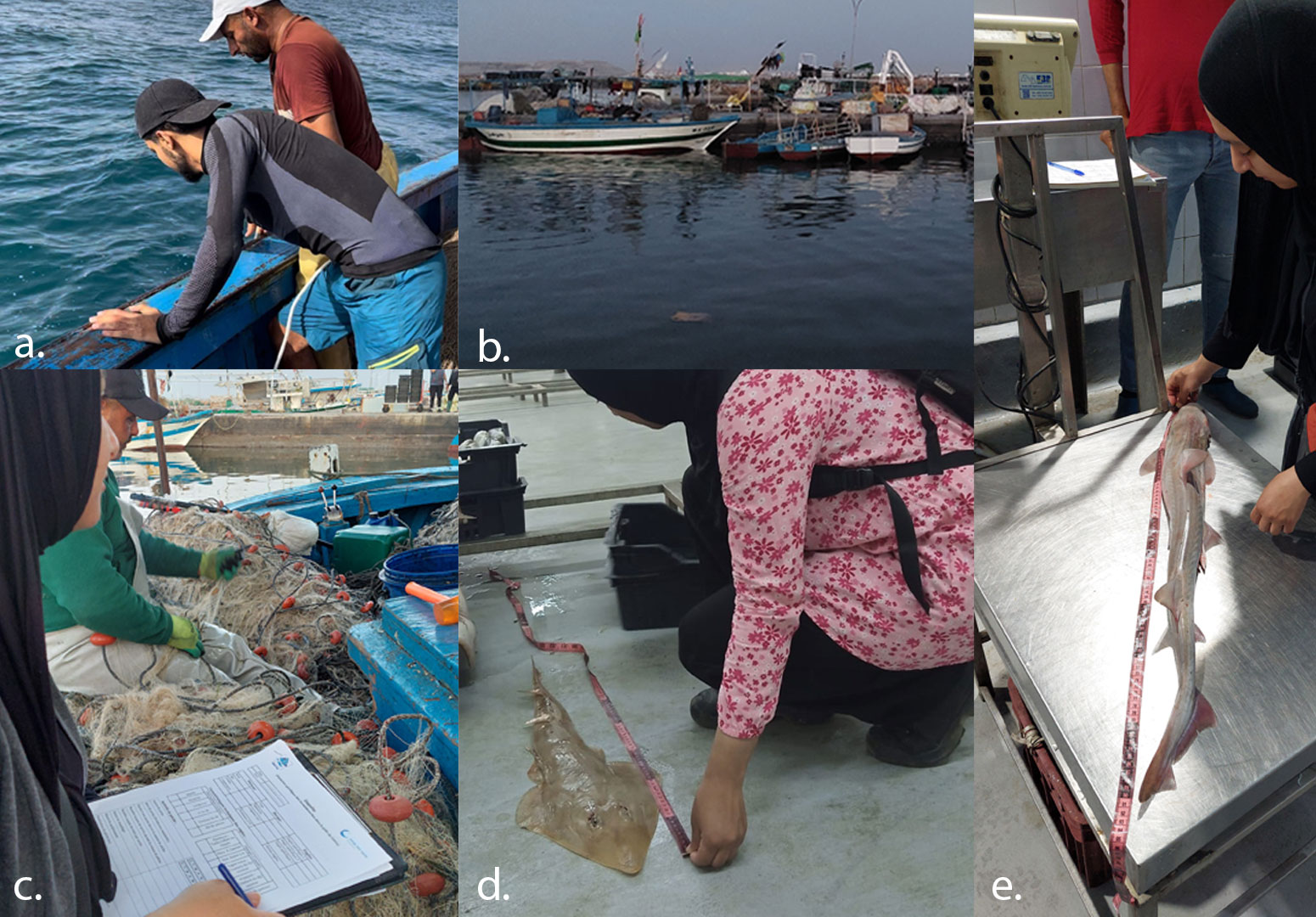On the Edge of Discovery: Preparing BRUVs for Tunisia’s Hidden Sharks
Since 2019, I have been monitoring elasmobranch-specific fisheries in Tunisia, working closely with fishermen who specialise in catching sharks and rays. My fieldwork has taken me to the main ports of Kerkennah, Sfax, Mahres, Djerba, and Zarzis, all located along the Gulf of Gabes, a region renowned for its rich biodiversity and ecological significance in both Tunisia and the broader Mediterranean Sea.
Through on-board observations and interviews, I have gained valuable insights into the capture of species such as the sandbar shark (Carcharhinus plumbeus) and guitarfishes (Rhinobatos spp.), helping to identify hotspots where these species are most frequently caught. After years of monitoring these fishing grounds, we are now introducing a new method in Tunisia: Baited Remote Underwater Video systems (BRUVs). These underwater video units, equipped with bait, are designed to attract and film marine animals in their natural habitat without, disturbing them.
We will use BRUVs to confirm the aggregation zones of these species. Validating these zones through BRUVs can provide critical evidence to support spatial or temporal fishing closures, particularly in areas used for reproduction, mating, or feeding. Such insights are essential for guiding science-based conservation and management strategies.

a. Field-testing the underwater camera system. Photo @ Ahmed Chahine Ben Romdhane; b. Port of Sfax. Photo © Yessine Ben Soltane; c. Interviewing the fishermen. Photo © Yessine Ben Soltane; d. Taking measurements of Rhinobatidae. Photo © Hala Turki; e. Taking measurements of Mustelus sp. Photo © Yessine Ben Soltane
In this new phase, I am collaborating with my colleague Ahmed Chahine Ben Romdhane, who is well trained in the field deployment of BRUVs. Together, we are laying the groundwork: contacting fishermen, planning onboard observation days, and selecting strategic sites for BRUV deployment.
While fisheries monitoring continues in the region to track changes in species composition and abundance, this year we are concentrating our efforts in the Sfax area and around Kerkennah Island. These are two key zones known for high elasmobranch activity. For the first time, we aim to observe these species alive in their natural environment, rather than only through landings and catches.
Although I have worked in these waters for many years, this new approach brings a fresh perspective. Will we be fortunate enough to capture sharks and rays on camera? What new information might the BRUVs reveal about their behaviour and habitat use? This isn’t just about equipment, it’s about deepening our understanding and strengthening the connection between science, fishermen, and the sea. I am excited to begin this new chapter.
